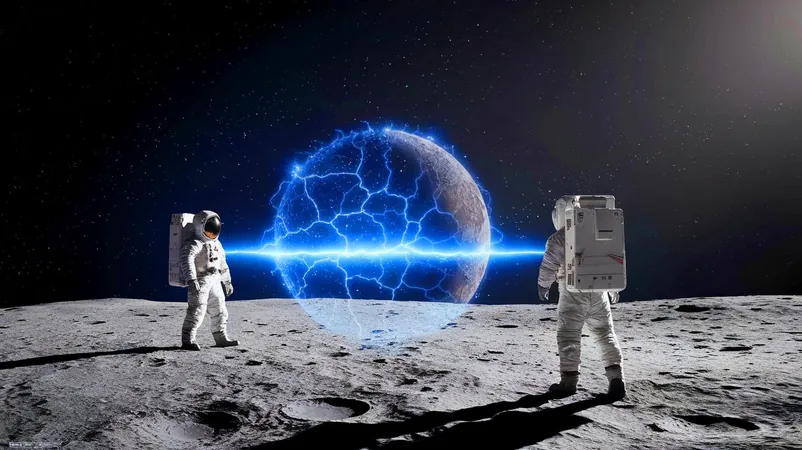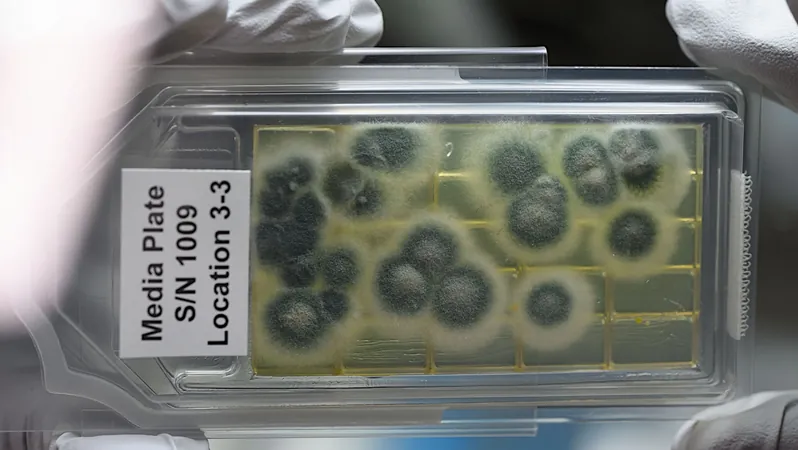
NASA's Groundbreaking Electric Force Field Set to Combat Lunar Dust: A Leap Towards Sustainable Moon Missions
2025-04-04
Author: Noah
Why Lunar Dust is a Major Concern
Lunar dust isn’t just an irritating problem for astronauts; it's a serious hazard. Created over billions of years from micrometeorite impacts, the powdery residue is everywhere and poses risks to both equipment and the health of astronauts. The sharp and abrasive nature of lunar dust can damage spacecraft, wear down spacesuits, and even lead to respiratory issues. During the Apollo missions, astronauts often returned with suits laden with dust, which frequently infiltrated the Lunar Modules, highlighting the urgent need for effective solutions.
Additionally, lunar dust carries an electrostatic charge that allows it to cling to surfaces, further complicating maintenance and operational effectiveness for any equipment used in lunar missions. Innovations like the Electrodynamic Dust Shield (EDS) are vital for overcoming these obstacles, especially as aspirations for long-term lunar habitation grow.
The Ingenious Mechanism of the Electrodynamic Dust Shield
The EDS utilizes a sophisticated array of minuscule electrodes generating a high-voltage alternating current. This current produces dielectrophoretic forces that initiate a traveling wave effect, effectively nudging dust particles away from critical surfaces in what can be described as an 'invisible cleaning operation.' Its design is notably efficient, with no moving parts, which minimizes the risk of mechanical failure over time.
This cutting-edge technology promises to enhance the operational performance of essential equipment such as solar panels, camera optics, and the visors of spacesuits by preventing dust accumulation. The EDS allows for targeted cleaning, as the electric field can be manipulated to direct particles away, ensuring that mission-critical tools remain functional in the hostile lunar environment.
Impressive Results from the Blue Ghost Mission
The recent tests during the Blue Ghost Mission 1 highlighted the EDS's effectiveness, with NASA releasing striking images that showcase the technology’s ability to clear dust from surfaces. The visual results were telling, as the test area transformed from a dusty expanse to a noticeably cleaner state post-EDS activation. While this test was not exhaustive, it significantly propels the potential integration of the EDS into future lunar missions.
The insights gained from this test are invaluable for refining the technology, paving the way for more advanced designs that can be utilized in upcoming lunar expeditions. NASA's ongoing lunar exploration efforts will undoubtedly benefit from innovations aimed at mitigating the planet's extreme environmental challenges.
Envisioning the Future of Lunar Exploration
As we set our sights on the continued exploration of the Moon, addressing its inhospitable conditions is crucial to establishing a sustainable human presence. The technological advancements embodied in the EDS are a testament to human ingenuity and determination in overcoming significant barriers.
NASA's relentless pursuit of solutions will undoubtedly inspire more groundbreaking technologies aimed at making lunar habitation a reality. As we journey further into space, the lessons learned from these advancements will guide humanity’s exploration of the Moon and beyond. What exciting innovations lie on the horizon as we venture into new frontiers? Stay tuned as we continue to unlock the enigmas of our celestial neighbors.









 Brasil (PT)
Brasil (PT)
 Canada (EN)
Canada (EN)
 Chile (ES)
Chile (ES)
 Česko (CS)
Česko (CS)
 대한민국 (KO)
대한민국 (KO)
 España (ES)
España (ES)
 France (FR)
France (FR)
 Hong Kong (EN)
Hong Kong (EN)
 Italia (IT)
Italia (IT)
 日本 (JA)
日本 (JA)
 Magyarország (HU)
Magyarország (HU)
 Norge (NO)
Norge (NO)
 Polska (PL)
Polska (PL)
 Schweiz (DE)
Schweiz (DE)
 Singapore (EN)
Singapore (EN)
 Sverige (SV)
Sverige (SV)
 Suomi (FI)
Suomi (FI)
 Türkiye (TR)
Türkiye (TR)
 الإمارات العربية المتحدة (AR)
الإمارات العربية المتحدة (AR)